Items filtered by date: January 2024
Various Types of Corns on the Feet
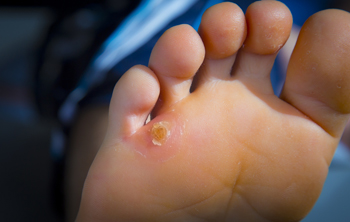
Corns, small and often painful thickened areas of skin, can manifest in different forms on the feet, causing discomfort and irritation. Hard corns typically develop on the top or sides of toes, forming dense and compact layers of dead skin. Soft corns thrive in moist areas between toes, adopting a softer texture due to increased hydration. Seed corns are tiny, often painless corns found on weight-bearing areas on the bottom of the feet. Vascular corns, appearing as a dark spot with tiny blood vessels, are less common but can be more painful. Understanding these distinct types of corns aids in their proper identification and subsequent management. A podiatrist can successfully treat any type of corn that may have developed. If you have a corn on your foot, it is suggested that you consult a podiatrist who can offer effective remedies and prevention techniques.
Corns can make walking very painful and should be treated immediately. If you have questions regarding your feet and ankles, contact Dan Kirk, DPM of Bluffton Foot & Ankle. Our doctor will treat your foot and ankle needs.
Corns: What Are They? And How Do You Get Rid of Them?
Corns are thickened areas on the skin that can become painful. They are caused by excessive pressure and friction on the skin. Corns press into the deeper layers of the skin and are usually round in shape.
Ways to Prevent Corns
There are many ways to get rid of painful corns such as:
- Wearing properly fitting shoes that have been measured by a professional
- Wearing shoes that are not sharply pointed or have high heels
- Wearing only shoes that offer support
Treating Corns
Although most corns slowly disappear when the friction or pressure stops, this isn’t always the case. Consult with your podiatrist to determine the best treatment option for your case of corns.
If you have any questions please feel free to contact our offices located in Bluffton and Celina, OH . We offer the newest diagnostic and treatment technologies for all your foot and ankle needs.
Causes of Foot Stress Fractures
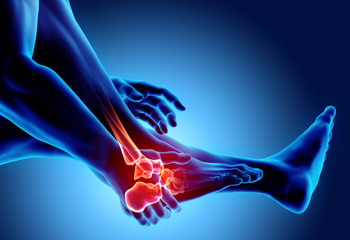
A foot stress fracture, a condition prevalent among athletes and individuals engaged in repetitive weight-bearing activities, is characterized by tiny cracks in the bones of the foot. These fractures often result from overuse, with excessive and repetitive impact on the feet causing structural fatigue. Contributing causes include sudden increases in physical activity, improper footwear, or inadequate training surfaces. Symptoms manifest gradually, beginning with localized pain during activity that subsides with rest. As the stress fracture progresses, the pain becomes persistent, and swelling may occur. Tenderness to touch, particularly at specific points on the foot, is a common indicator. Ignoring these symptoms can lead to more severe fractures, potentially requiring prolonged recovery. Understanding the definition, causes, and symptoms of foot stress fractures is essential for individuals engaged in high-impact activities. If you have a foot stress fracture, it is suggested that you make an appointment with a podiatrist who can guide you toward the best treatment.
Stress fractures occur when there is a tiny crack within a bone. To learn more, contact Dan Kirk, DPM from Bluffton Foot & Ankle. Our doctor can provide the care you need to keep you pain free and on your feet.
How Are They Caused?
Stress fractures are the result of repetitive force being placed on the bone. Since the lower leg and feet often carry most of the body’s weight, stress fractures are likely to occur in these areas. If you rush into a new exercise, you are more likely to develop a stress fracture since you are starting too much, too soon. Pain resulting from stress fractures may go unnoticed at first, however it may start to worsen over time.
Risk Factors
- Gender – They are more commonly found in women compared to men.
- Foot Problems – People with unusual arches in their feet are more likely to develop stress fractures.
- Certain Sports – Dancers, gymnasts, tennis players, runners, and basketball players are more likely to develop stress fractures.
- Lack of Nutrients – A lack of vitamin D and calcium may weaken the bones and make you more prone to stress fractures
- Weak Bones – Osteoporosis can weaken the bones therefore resulting in stress fractures
Stress fractures do not always heal properly, so it is important that you seek help from a podiatrist if you suspect you may have one. Ignoring your stress fracture may cause it to worsen, and you may develop chronic pain as well as additional fractures.
If you have any questions, please feel free to contact our offices located in Bluffton and Celina, OH . We offer the newest diagnostic and treatment technologies for all your foot care needs.
Definition and Symptoms of Plantar Fasciitis
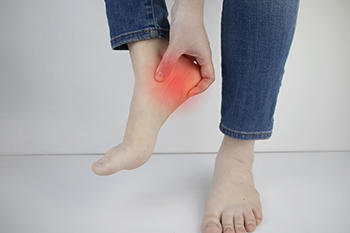
Plantar fasciitis is a common foot ailment characterized by inflammation of the plantar fascia, a thick band of tissue that connects the heel bone to the toes. The condition typically results from repetitive strain or excessive stress on the feet, causing tiny tears in the ligament. Individuals with plantar fasciitis often experience a stabbing pain near the heel, especially with the first steps in the morning. This discomfort may gradually subside during the day, only to resurface after prolonged periods of standing or intense physical activity. The pain tends to be more pronounced after sitting for an extended duration and can impact daily activities, affecting the overall quality of life. Understanding the definition and recognizing the symptoms of plantar fasciitis is essential for timely intervention and management. Plantar fasciitis can cause severe pain and discomfort. If you have developed this condition, it is strongly suggested that you are under the care of a podiatrist who can guide you toward the correct treatment method.
Plantar fasciitis can be very painful and inconvenient. If you are experiencing heel pain or symptoms of plantar fasciitis, contact Dan Kirk, DPM from Bluffton Foot & Ankle. Our doctor can provide the care you need to keep you pain-free and on your feet.
What Is Plantar Fasciitis?
Plantar fasciitis is the inflammation of the thick band of tissue that runs along the bottom of your foot, known as the plantar fascia, and causes mild to severe heel pain.
What Causes Plantar Fasciitis?
- Excessive running
- Non-supportive shoes
- Overpronation
- Repeated stretching and tearing of the plantar fascia
How Can It Be Treated?
- Conservative measures – anti-inflammatories, ice packs, stretching exercises, physical therapy, orthotic devices
- Shockwave therapy – sound waves are sent to the affected area to facilitate healing and are usually used for chronic cases of plantar fasciitis
- Surgery – usually only used as a last resort when all else fails. The plantar fascia can be surgically detached from the heel
While very treatable, plantar fasciitis is definitely not something that should be ignored. Especially in severe cases, speaking to your doctor right away is highly recommended to avoid complications and severe heel pain. Your podiatrist can work with you to provide the appropriate treatment options tailored to your condition.
If you have any questions please feel free to contact our offices located in Bluffton and Celina, OH . We offer the newest diagnostic and treatment technologies for all your foot and ankle needs.
Foot Pain May Indicate PAD
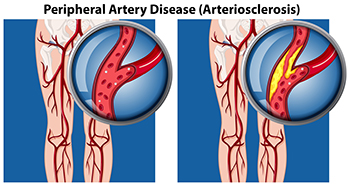
Foot pain is more than just an annoyance. It can signal a potential threat to your overall health. One such condition linked to foot discomfort is peripheral artery disease, abbreviated PAD, and is a serious condition that, if left untreated, can have fatal consequences. PAD occurs when fatty deposits accumulate in the arteries, restricting blood flow to the leg muscles. This condition is not to be taken lightly, as it often leads to more severe complications, such as coronary heart disease and an increased risk of strokes. Recognizing the signs of PAD early on is essential for effective treatment and prevention of further complications. The primary indicators of peripheral artery disease are recurring leg pain during exercise, foot pain, persistent ulcers, and the development of gangrene. Foot pain, ranging from mild to severe, is a common symptom that typically subsides with rest. If you notice open sores, known as ulcers, on your feet or legs that do not heal, it is essential to consult with your podiatrist promptly. Gangrene, a severe condition characterized by swelling, pain, and the production of foul-smelling pus, can occur when PAD progresses. Skin changes, such as coldness, numbness, and discoloration, may also manifest. If you are experiencing symptoms of peripheral artery disease in the feet and ankles, it is suggested that you schedule an appointment with a podiatrist for treatment.
Peripheral artery disease can pose a serious risk to your health. It can increase the risk of stroke and heart attack. If you have symptoms of peripheral artery disease, consult with Dan Kirk, DPM from Bluffton Foot & Ankle. Our doctor will assess your condition and provide you with quality foot and ankle treatment.
Peripheral artery disease (PAD) is when arteries are constricted due to plaque (fatty deposits) build-up. This results in less blood flow to the legs and other extremities. The main cause of PAD is atherosclerosis, in which plaque builds up in the arteries.
Symptoms
Symptoms of PAD include:
- Claudication (leg pain from walking)
- Numbness in legs
- Decrease in growth of leg hair and toenails
- Paleness of the skin
- Erectile dysfunction
- Sores and wounds on legs and feet that won’t heal
- Coldness in one leg
It is important to note that a majority of individuals never show any symptoms of PAD.
Diagnosis
While PAD occurs in the legs and arteries, Podiatrists can diagnose PAD. Podiatrists utilize a test called an ankle-brachial index (ABI). An ABI test compares blood pressure in your arm to you ankle to see if any abnormality occurs. Ultrasound and imaging devices may also be used.
Treatment
Fortunately, lifestyle changes such as maintaining a healthy diet, exercising, managing cholesterol and blood sugar levels, and quitting smoking, can all treat PAD. Medications that prevent clots from occurring can be prescribed. Finally, in some cases, surgery may be recommended.
If you have any questions, please feel free to contact our offices located in Bluffton and Celina, OH . We offer the newest diagnostic and treatment technologies for all your foot care needs.
Do Your Child's Feet Hurt?
Surgery Considerations for Plantar Fibroma
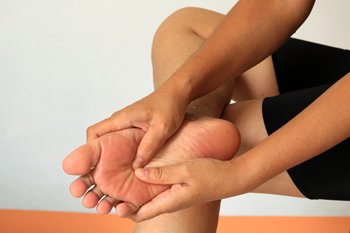
Plantar fibroma, a benign yet often painful growth on the sole of the foot, presents challenges that prompt a range of treatment options. Non-surgical approaches typically involve conservative methods, such as orthotics and corticosteroid injections, to alleviate symptoms and reduce inflammation. However, in cases where the fibroma causes persistent discomfort or interferes with daily activities, surgical intervention may be considered. Surgery for plantar fibroma aims at excising the fibrous tissue and restoring optimal foot function. The procedure involves careful consideration of the fibroma's size, location, and impact on surrounding structures. Recovery from surgery may involve a period of immobilization to regain strength and flexibility. While surgical intervention poses inherent risks, it can offer significant relief and improved mobility for individuals grappling with the challenges posed by a plantar fibroma. If you have developed a plantar fibroma, it is suggested that you consult with a podiatrist who can determine if surgery is a correct treatment option for you.
A plantar fibroma may disrupt your daily activities. If you have any concerns, contact Dan Kirk, DPM of Bluffton Foot & Ankle. Our doctor can provide the care you need to keep you pain-free and on your feet.
Plantar Fibroma
A plantar fibroma is a fibrous knot in the arch of the foot. It is embedded in the plantar fascia which is a band of tissue that extends from the heel to the toes along the bottom of the foot. There can be multiple plantar fibromas in the feet at the same time. There are no known causes for this condition. If you have a plantar fibroma, there will be a bump in the arch of your foot that cannot be missed. Any associated pain is most often due to a shoe rubbing against the nodule. Non-surgical options, such as steroid injections, physical therapy, and orthotics should be tried first. Surgery is a last resort and is the only thing that will remove a plantar fibroma entirely. Consult with a podiatrist for a proper diagnosis and to determine the treatment regimen that is right for you.
What Causes a Plantar Fibroma?
While there are no specific causes identified, a plantar fibroma can possibly come from genetic predisposition or the formation of scar tissue that forms from healing the tears in the plantar fascia.
What Are the Symptoms of a Plantar Fibroma?
There will be a noticeable lump in the arch of the foot that may or may not cause pain. If pain is felt, it is typically because a shoe is rubbing up against the lump or when walking or standing barefoot.
Treatment and Prevention
A plantar fibroma will not disappear without treatment, but it can get smaller and be a non-issue. If pain persists, a podiatrist examines the foot and when the arch of the foot is pressed, pain can be felt down to the toes. An MRI or biopsy might be performed to help diagnose or evaluate the plantar fibroma. The following non-surgical options are generally enough to reduce the size and pain of these nodules:
- Steroid injections
- Orthotics
- Physical therapy to help apply anti-inflammatory creams on the bump
Surgery is considered if the mass increases in size and the patient continues to feel pain after non-surgical methods are tried.
If you have any questions please feel free to contact our offices located in Bluffton and Celina, OH . We offer the newest diagnostic tools and technology to treat your foot and ankle needs.

